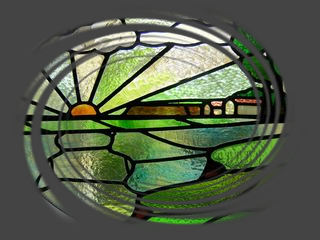 |
Terrific Tenby... |
 |
Terrific Tenby... |
The River Severn in between South Wales and Devon & Cornwall has the second Highest tides in the world.
It's a beautiful place right along it's length and we have the priveledge of living on it's north Side in South Wales
The selectioon of pictures in this gallery illustrates some of the ancient and recent history of the area
The area around Goldcliff near Newport is widely recognised as an area with some fascinating history. In this area prehistoric footprints have been found. They date from the Mesolithic (or Middle Stone Age) period (c. 10 000–4000 BC). As well as the footprints which are only seen when excavated, there are the clear remnants of the fossil forest which are easy to see at a low tide.
Sorry no pictures of the Mesolithic footptints, but some of our own added to the foreshore for posterity possibly (althought I suspect it's more likely that they will have been washed away by now and these are the only records)
If you want to read more about the Mesolithic remains on this shore then take a look at the Severn Estuary Levels Research Comittee site or the Time Team Website
As well as being important in Archaeological time this locality is also importnat for it's geology and there is a rare exposure of some Jurassic Rocks that have been designated as a Regionally Important Geolgical Site (RIGS).
The next few pictures are from Sully Island is an intertidal Island near Barry. it's a great place to visit, but do mind the time as the in-rushing sea can make the causeway a treacherous place.
There is a wreck of a boat here which is often reputed to be the SY Scotia an Antarctic vessel used by the Scottish National Antarctic Expedition, but from my reading of the size of that vessel these remains are less than half it's length and they cannot be Scotia
There are Dinosaur footprints on the landward side of the coast close to the island which are shown in the Geology Galleries on this site, but even though the rocks on the island are the same age no footprints have yet been found there.
The sand dunes are further down the coast near Swansea, and are the Crymlin Burrows reserve. This is a wonderful place with a number of very special plants, but if you're not a botanist then just a great place for a walk especially as it's often deserted even on a hot summer day as most beach lovers will not take a long walk
The pictures in this section are taken with my E-510 and E-30 Olympus cameras with a selection of lenses.